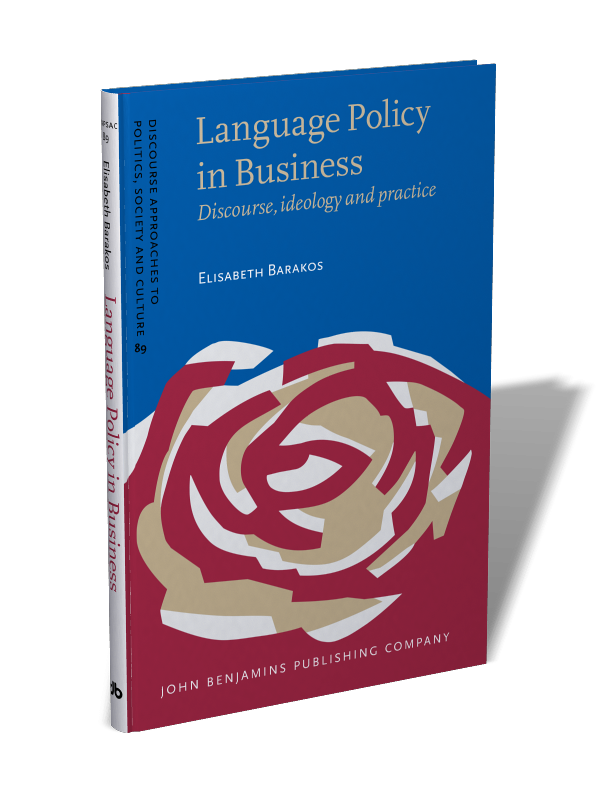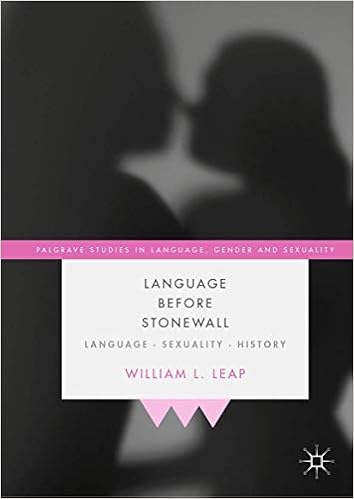
https://global.oup.com/academic/product/the-last-language-on-earth-9780197509913
Carolina Rodriguez Alzza: Could you tell how was your first approach to the Eskaya language, and how did Eskayan villages in Bohol become a field site for you?
Piers Kelly: Way back in January of 1980, the Eskaya people were ‘discovered’ by agricultural advisers in the highlands of Bohol in the southern Philippines. These isolated people were wearing clothes made of plant fiber, speaking in an unknown language and writing in a strange script. The story of this encounter spread quickly, prompting a series of informal visits from tourists, adventurers and tabloid journalists. Some of the subsequent reports they made about the putatively lost tribe became infused with local folklore traditions of lost worlds and lost treasures. Eventually a hard-nosed journalist from Manila came and wrote an exposé in which she argued that the Eskaya were in fact a rural cult speaking an invented language. In the years that followed Eskaya people started to defend their interests in terms of access to land and resources. They would eventually make use of the Indigenous Peoples Rights Act to do this and from the 1990s onwards they began identifying themselves as Indigenous people. It was through this process that I first came into contact with the community.
In 2005 I had been working for the travel publisher Lonely Planet in Melbourne when a job opportunity came up in an Australian government aid program to document an undescribed language of the Philippines. I reached the Philippines at the end of that year and worked out of the service center of the National Commission on Indigenous Peoples in Tagbilaran, the main township of the island province of Bohol. My role was to produce linguistic reports to help evaluate an Eskaya claim for legal recognition.
When I got to the Eskaya villages I began working very intensely, making recordings, photographing traditional Eskaya manuscripts and trying to learn the language. I was already aware that the status of the Eskayan language was controversial. Some were saying that it had been fabricated to attract government funding to an underdeveloped corner of the highlands. Others were making even stranger claims, for example, that the Eskayan language was really Hebrew or Etruscan.
At the end of ten months I wrote up a report in which I concluded that Eskayan was likely to have been created within a single generation, and that this theory was consistent with the speakers’ own origin stories that attributed the creation to a heroic ancestor. I also suggested that this creative event likely occurred some time after Spanish colonization in the 16th century. This was on the basis of the fact the Eskayan appeared to share the same morphosyntax as Visayan (the dominant language of Bohol), but with a radically different lexicon, and that this lexicon exhibited a strong influence from Spanish even in core vocabulary. In other words, there were Spanish loanwords turning up in parts of the lexicon that don’t usually attract loans, for example, in body part terms. It looked very much like the creative ancestor had taken Visayan morphosyntax as a basis but systematically replaced all the lexemes with newly devised terms. In doing so, the ancestor was influenced by Spanish as a model of linguistic foreignness.
I was worried that these findings would reinforce a narrative that the Eskaya people were inauthentic since their language was recent. But in fact the Indigenous Peoples Rights Act is less about establishing indigeneity and more about finding evidence for ongoing occupation and cultural continuity.
I was still very interested in this topic but my lack of qualifications ended up weighing on me and when I returned to Australia I started studying linguistics for the first time. I eventually enrolled in a PhD so that I would have the opportunity to go back to Bohol and keep researching.
Carolina Rodriguez Alzza: The book starts with a question you heard repeatedly from local people: “Is Eskayan real?” How did this question motivate your research on the Eskaya language and how has your work challenged previous approaches to study this language?
Piers Kelly: In some ways this question is the crux of the entire book. From the 1990s onwards Eskaya people began identifying themselves as Indigenous. This was not a category that they had used before so it involved a certain amount of adaptation to meet the administrative requirements of government. For example, each village had to appoint a chieftain and make official lists of tribal customs and laws. At the same time, Eskaya people have always maintained that their special language and script were both invented by the ancestor Pinay, whom they recognize as the first pope in the Philippines. In effect, Eskaya people had a traditional set of beliefs about themselves and their language that didn’t neatly match up with the lowlander image of an exotic lost tribe, nor with the tick-the-box requirements of a government department. All of this is to say that the answer to the question “Is Eskayan real?” depends on what you take linguistic authenticity to be.
Adding further complexity, Eskayan has never been used as a language of everyday communication but is used only in the context of schooling, speechmaking, prayer, song, and the written is used in the reproduction of traditional stories. What I wanted to do was ask the Eskaya people themselves what they thought about their language, where it came from and what their own criteria were for defining a language. Equally, I wanted to do a better job at analyzing the language itself since I was confident that its grammar, lexicon and writing system would reveal something important about the context of creation, mythic or otherwise. This was a departure from previous media commentaries that neither examined the language, nor paid any serious attention to Eskaya perspectives.
Eskaya people narrate that their created language was suppressed under early Spanish rule, but that records of it were discovered carved on tablets by their leader Mariano Datahan (ca. 1875–1949). In the wake of the devastating Philippine–American War (1899-1902), Datahan spearheaded a radical sect within the Philippine Independent Church and gained many followers in the mountains. Today such a movement would indeed be characterized as a cult but in the early 20th century, such movements were commonplace throughout the Philippines and they were highly political organizations. They asserted a desire for independence from US rule and expressed a great deal of cultural self-confidence and patriotism. My analysis—based on linguistic, archival, oral historical and genealogical evidence—places the creation of the language (or its ‘revelation’) in the 1920s and 1930s during a period of relative peace and optimism. In other words, it happened at a time when Filipinos living in remote or isolated areas were invited into the national conversation. It was also a time when both elites and non-elites were imaginatively reaching back to a time before colonization and trying to restore a more authentic and uncorrupted Filipino culture to embody aspirations for independence. Throughout traditional Eskaya literature, written in both Eskayan and Visayan, there is a real struggle to articulate a language ideology that reconciles the supposedly natural and the artificial. The Eskayan language, after all, is understood to have been intentionally created and then recuperated, but the act of creation is regarded as organic. It comes directly from the human body and it can’t be falsified or misrecognized. In this way, the language itself is a political statement that embodies a claim to cultural sovereignty.
Carolina Rodriguez Alzza: Your book offers a brief history of language ecology in Bohol. How is language diversity and linguistic contact traceable in Eskaya manuscripts? What do you mean with “sources of inspiration”?
Piers Kelly: The language of Bohol is called Boholano-Visayan and it’s one of several varieties that make up the Visayan language. The Eskayan language has the same morphosyntax as Visayan but a radically different lexicon. I was interested in taking the traditional account of a creative ancestor seriously and then asking, how did he go about making this language? What was his theory of language? What resources did he draw on? It’s clear that he drew on Visayan primarily including regional varieties like Hiligaynon, but when it came to innovating a lexicon he took inspiration from Spanish, especially in the syllable structure. There is also an influence from English. What’s fascinating is that the influence from outside languages doesn’t conform to typical patterns of borrowing. Filipino languages certainly draw on Spanish or English models when it comes to lexifying products, species or technologies introduced during the colonial encounter. But languages in the Philippines and elsewhere do not generally borrow terms for really basic concepts, like ‘air’, ‘water’, ‘head’ or ‘hand’. Eskayan bucks the trend. It relies on Spanish and English words for core vocabulary like body parts (the Eskayan word for skin is piyil from Spanish piel), while creating native terms for new technologies like ‘airplane’ (the Eskayan word is kanis) or introduced animals like ‘horse’ (the Eskayan word is bril). So innovation goes right through the language. The creative ancestor, and his prophet Mariano Datahan, were not concerned with replicating naturalistic patterns of borrowing but rebuilding the lexicon from the ground up.
Carolina Rodriguez Alzza: Could you explain more how the Eskaya writing system is unique among world’s scripts and how it has enabled the Eskaya people and their knowledge to be protected in the Philippines?
Piers Kelly: Unlike languages, all writing systems of the world are artificial. At the same time there are only a limited number of ways that a writing system can encode language, so the typology of writing systems is relatively narrow. What’s interesting about the Eskaya writing system is that it combines so many different typologically distinct methods of representing language. It has alphabetic, alphasyllabic, syllabic and even morphographic characteristics, and there are more than one thousand individual signs. The outward form of the script is said to be inspired by human body parts and in some cases you can recognize this iconicity. There is a symbol that represents an ear, and another that represents a brain and another that represents an esophagus. Interestingly too, the script is visually complex to an almost excessive degree and there’s no evidence that it has been simplifying as other scripts tend to do over time. What I argue is that this complexity if a feature not a bug. It is designed to be cryptic and hard to learn. It acts as a natural barrier to acquisition, so if you learn to read and write in Eskayan it proves that you have passed through a challenging intellectual process. At the same time, the complexity of the script is presented as tangible evidence of cultural sophistication. I see this dynamic at work throughout the Eskayan language and literature, and I use the term ‘mimicry and rejection’ to describe it. It’s all about replicating a colonial model but then ratcheting it up to a more complex formation to then stand in opposition to the original model.
Carolina Rodriguez Alzza: How does the Eskaya language encourage us to rethink “what is a language”?
Piers Kelly: The creation of Eskayan might represent an extreme situation but it’s one that I think brings the politics and aesthetics of language into sharp relief. Learned from infancy, language is understood a natural and even instinctual aspect of human development. At the same time we’re always forming analogies between linguistic phenomena and social phenomena, and we love manipulating language to do things other than straightforward communication. In a very stark way, the Eskayan lays bare the kinds of language ideologies that underpin language use around the world.






